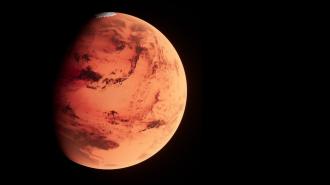A neural network was able to rediscover one of the most important paradigm shifts in scientific history: Earth and other planets revolve around the Sun. The accomplishment suggests machine-learning techniques could someday help to reveal new laws of physics, maybe even within the complex realm of quantum mechanics.
The results are set to appear in the journal Physical Review Letters, according to Nature.
The neural network — a machine-learning algorithm called SciNet — was shown measurements of how the Sun and Mars appear from Earth against the fixed-star background of the night sky. SciNet’s task, assigned by a team of scientists at the Swiss Federal Institute of Technology, was to predict where the Sun and Mars would be at future points in time.
Copernicus-style formulae
In the process, SciNet generated formulas that place the Sun at the center of our solar system. Remarkably, SciNet accomplished this in a way similar to how astronomer Nicolaus Copernicus discovered heliocentricity.
“In the 16th century, Copernicus measured the angles between a distant fixed star and several planets and celestial bodies and hypothesized that the Sun, and not the Earth, is in the centre of our solar system and that the planets move around the Sun on simple orbits,” the team wrote in a paper published on the preprint repository arXiv. “This explains the complicated orbits as seen from Earth.”
The team “encouraged” SciNet to come up with ways to predict the movements of the Sun and Mars in the simplest way possible. To do that, SciNet passes information back and forth between two sub-networks. One network “learns” from data, and the other uses that knowledge to make predictions and test their accuracy. These networks are connected to each other by only a few links, so when they communicate, information is compressed, resulting in “simpler” representations.
SciNet decided that the simplest way to predict the movements of celestial bodies was through a model that places the Sun at the center of our solar system. So, the neural network didn’t necessarily “discover” heliocentricity, but rather described it through mathematics that humans can interpret.
Building human-like AI
In 2017, data scientist Brenden Lake and his colleagues wrote a paper describing what it will take to build machines that learn and think like people. One benchmark for doing so would be artificial intelligence that can describe the physical world. At the time, they said it “remains to be seen” whether “deep networks trained on physics-related data” could discover laws of physics on their own. In a narrow sense, SciNet passes this test.
“To summarize, the main aim of this work is to show that neural networks can be used to discover physical concepts without any prior knowledge,” the SciNet team wrote. “To achieve this goal, we introduced a neural network architecture that models the physical reasoning process. The examples illustrate that this architecture allows us to extract physically relevant data from experiments, without imposing further knowledge about physics or mathematics.”
This article was reprinted with permission of Big Think, where it was originally published.






